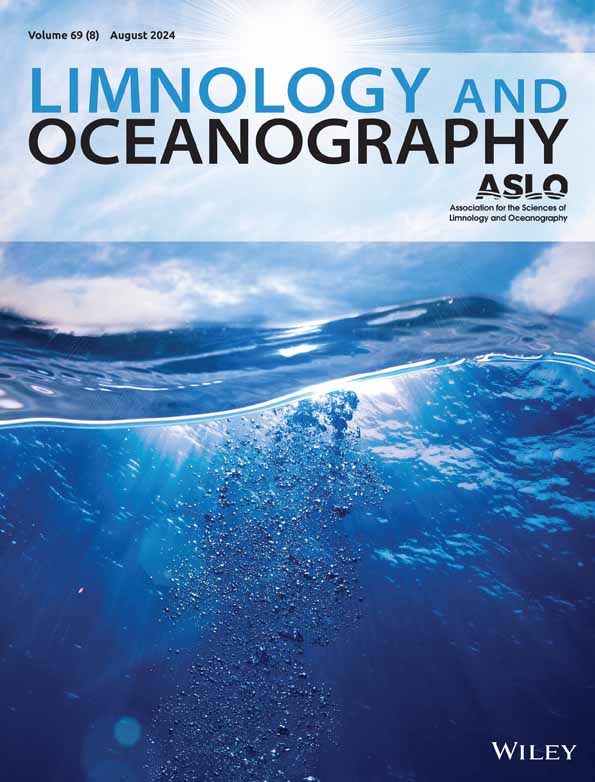Differential effects of Daphnia genotype composition on spatial environmental heterogeneity in experimental metacommunities
IF 3.8
1区 地球科学
Q1 LIMNOLOGY
引用次数: 0
Abstract
Spatial environmental heterogeneity is an important driver of aquatic biodiversity. Ecological and evolutionary theory often consider spatial heterogeneity as being driven by exogenous factors, yet heterogeneity can also be generated and modified by organisms. Here we used a mesocosm experiment to investigate if consumers influence the build‐up of spatial heterogeneity. We expected that consumer effects on heterogeneity would depend on consumer composition and differ among response variables. We constructed metacommunities consisting of three mesocosms and manipulated the presence and composition of consumers, using four treatment levels: (1) no consumers, (2) two genotypes of水蚤基因型组成对实验元群落空间环境异质性的差异影响
空间环境异质性是水生生物多样性的重要驱动因素。生态学和进化理论通常认为空间异质性是由外源因素驱动的,但异质性也可以由生物产生和改变。在这里,我们利用中观宇宙实验来研究消费者是否会影响空间异质性的形成。我们预计,消费者对异质性的影响将取决于消费者的组成,并因响应变量的不同而不同。我们构建了由三个中观生物群落组成的元群落,并使用四个处理水平来操纵消费者的存在和组成:(1)无消费者;(2)两种基因型的水蚤;(3)水蚤和长水蚤;以及(4)水蚤和水蚤×长水蚤的杂交种。然后,我们分别向三个中置池中的两个添加营养物质和溶解有机碳(DOC),不断增加每个元群落三个斑块之间的异质性。我们发现,消费者会影响异质性的增加,但消费者组成不同,影响的方向和程度也不同。仅有 D. galeata 的元群落浮游植物生物量的异质性增加,而有 D. longispina 或杂交种的元群落浮游植物异质性较低。水蚤类群对浮游植物异质性的不同影响向下延伸到非生物环境,导致类群对光消弱、溶解无机氮和总无机碳异质性的特定影响。我们的研究结果表明,消费者物种的变化(例如,由于环境变化或入侵)不仅可能影响当地环境,还可能影响环境间的异质性,从而对水生生物多样性产生重要影响。
本文章由计算机程序翻译,如有差异,请以英文原文为准。
求助全文
约1分钟内获得全文
求助全文
来源期刊

Limnology and Oceanography
地学-海洋学
CiteScore
8.80
自引率
6.70%
发文量
254
审稿时长
3 months
期刊介绍:
Limnology and Oceanography (L&O; print ISSN 0024-3590, online ISSN 1939-5590) publishes original articles, including scholarly reviews, about all aspects of limnology and oceanography. The journal''s unifying theme is the understanding of aquatic systems. Submissions are judged on the originality of their data, interpretations, and ideas, and on the degree to which they can be generalized beyond the particular aquatic system examined. Laboratory and modeling studies must demonstrate relevance to field environments; typically this means that they are bolstered by substantial "real-world" data. Few purely theoretical or purely empirical papers are accepted for review.
 求助内容:
求助内容: 应助结果提醒方式:
应助结果提醒方式:


